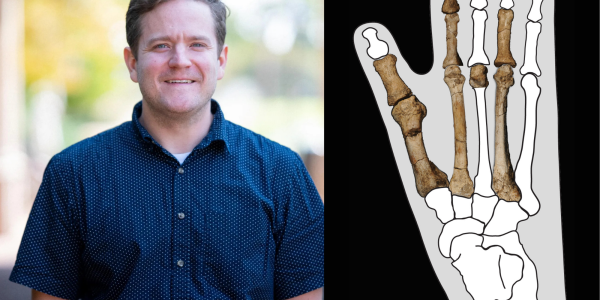A WashU physicist proposes an outside-the-box idea for detecting alien biology.
Are we alone in the universe? The answer to one of humanity’s biggest questions is complicated by a basic reality: If there is life on other worlds, it may not look familiar. A sample of rocks from Mars or another planet almost certainly won’t have recognizable fossils or another similarly obvious sign of living organisms, said Mikhail Tikhonov, an assistant professor of physics who studies microbial communities.

But just because we might not recognize signs of life on a distant moon or planet doesn’t mean it’s actually lifeless. “There could be life forms out there that defy our imagination,” Tikhonov said.
Searching for life that we don’t understand may seem like an impossible mission. In a paper published in Nature Communications, Tikhonov and co-author Akshit Goyal of the International Centre for Theoretical Science in Bengaluru, India, propose a new idea. Instead of looking for particular molecules or compounds associated with life as we know it, scientists can look for tell-tale patterns of energy.
Tikhonov discussed his out-of-this-world idea with the Ampersand.
What is the basic definition of life? How are living things different from non-living things?
We don’t know anything about what alien life forms might look like or what they’re made of. But there are two things everyone agrees on: Living things have to consume and transform energy, and they have to be able to replicate. That’s as close as we can get to a definition of life.
When looking for measurable signatures of life on other worlds, we need to make additional assumptions. We are proposing that any living organism is extremely unlikely to be on its own. It will always be a part of an ecological community that is competing for resources.
Couldn’t we detect life simply by looking for signs of organic compounds or other biological markers?
It’s important to realize that the compounds we call “organic” are not actually exclusive to life. They can also form without any biological processes. But more importantly, there is no reason to believe that an alien life form would have to be using the same molecules we do.
How can we find life on other planets if we don’t know what we’re looking for?
That’s exactly the question that we attempted to answer with our new paper. Instead of searching for any one specific molecule, we suggest looking for particular patterns in many molecules.
Chemical compounds have different amounts of energy stored in them. On Earth, living things break down high-energy compounds like glucose into lower-energy products like carbon dioxide.
Life is incentivized to break down high-energy compounds first. Organisms that consume more energy-rich resources will outcompete and displace others, leading to a particular kind of layering, with compounds arranged by decreasing energy content. It doesn’t matter what the organisms look like — as long as you have self-replication and ecological competition, we expect this pattern to form.
Layered structures can be generated by many processes, both living and non-living. But only life cares about energy in this way, so energy-ordered layering would be special. On Earth, such patterns are common. Our argument is that if a rock from Mars or some other world shows this same pattern, this is strong evidence that life was involved.
When we talk about alien life forms, how bizarre could it possibly get?
Some people believe that there simply aren’t that many ways of making a living thing, so an independently evolved life might still look a lot like Earth’s bacteria, or maybe even like ourselves. But as a theorist, it’s my job to think about what else is possible. What if on some distant planet, life operates on an entirely different scale? One could imagine a mile-long being floating in some distant atmosphere. The possibilities are vast, which is why it’s fun to think about.
Header illustration credit: NASA/JPL-Caltech





